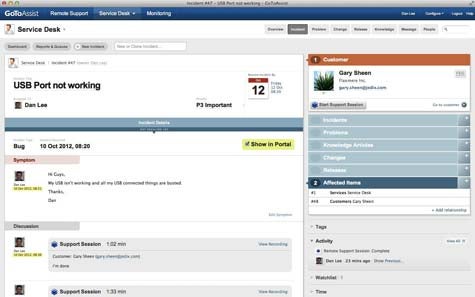All things being equal, most organizations would not opt to manage IT the way they do today. Instead of having to invest in dedicated IT infrastructure they would be making more use of IT management software delivered as a service. And they would look for a platform that was designed from the ground up to handle multiple kinds of devices that may not even be owned by the company.
According to Elizabeth Cholawsky, vice president and general manager of the IT support line of business at Citrix, it’s those twin issues that are driving the adoption of GoToAssist, help desk software that is delivered as a service in the cloud.
But more importantly, Cholawsky says new IT management platforms are required to give end users self-service capabilities based on rules that are derived from a knowledge base managed by IT. End users today want to be able to solve their own issues without waiting for IT to find the time to solve their problem.
The simple fact is that most of the issues that generate a trouble ticket on a help desk are relatively simple, and IT people by and large have more pressing tasks to attend to these days.
Cholawsky says existing on-premise help desks are not only weak in terms of providing self-service capabilities, they were never designed to be regularly upgraded to deal with an IT environment that dynamically changes as much as it does today. In contrast, software-as-a-service applications take away all the complexity involved.
Of course, the biggest issue when it comes to help desks may be simple inertia. IT organizations tend to get into a rut in terms of how they provide IT support. But between the rise of the bring-your-own-device (BYOD) phenomenon and cloud computing, difficult conversations relating to the quality of IT service being delivered across the enterprise are about to get forced.




